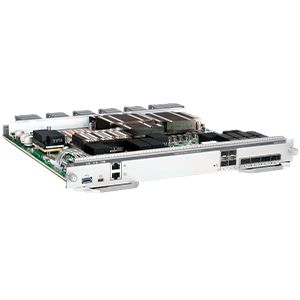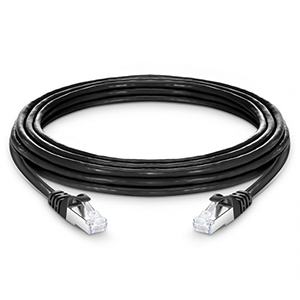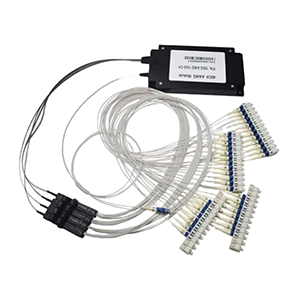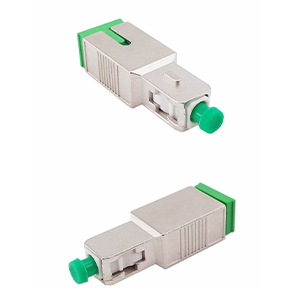Welcome to learn about the 100BASE-FX optical module, a fiber optic transmission module for 100 Mbps Ethernet. 100BASE-FX optical modules provide reliable network connections through optical fiber transmission and are suitable for various application scenarios such as LAN access and enterprise networks. Let’s take a closer look at this highly efficient optical module.
The 100BASE-FX optical module is an optical fiber transmission module specially designed for 100 Mbps Ethernet. It usually uses SC or ST connectors to provide stable fiber optic connection solutions. This optical module offers high performance and reliability, making it ideal for high-speed data transmission.
Introduction to 100BASE-FX optical module
Definition and background:
The 100BASE-FX optical module is an optical fiber transmission module used for 100 Mbps Ethernet. It uses optical fiber as the transmission medium to achieve high-speed data communication through the transmission of optical signals. 100BASE-FX is a fiber-based Ethernet standard that was first proposed in 1995 and is widely used in many local area network (LAN) and wide area network (WAN) applications.
Optical module type:
100BASE-FX optical module has the following features and functions:
-
Rate and distance: The 100BASE-FX optical module supports a data transmission rate of 100 Mbps and is suitable for medium-distance optical fiber connections. It is commonly used for intra-building connections in local area networks (LANs), and its transmission distance can reach several hundred meters.
-
Connector type: 100BASE-FX optical modules usually use SC (Subscriber Connector) or ST (Straight Tip) connectors. The SC connector is a common fiber optic connector with a circular shape and simple plugging and unplugging characteristics. The ST connector is also a common fiber optic connector with a cylindrical shape and is suitable for multi-mode fiber optic connections.
-
Fiber type: 100BASE-FX optical modules usually use multi-mode fiber (MMF) as the transmission medium. Multimode fiber is suitable for short-distance transmission. Its core diameter is larger and optical signals can be transmitted through multiple optical modes.
-
Transmission method: 100BASE-FX optical module adopts half-duplex transmission method, that is, data can only be transmitted in one direction. This means that during the transmission process, the sending and receiving of data are carried out separately, and two-way communication cannot be carried out at the same time.
The 100BASE-FX optical module provides high-speed, reliable data transmission through optical fiber transmission and is suitable for Ethernet applications that require shorter distance connections. It is widely used in local area networks and wide area networks, providing enterprises and institutions with reliable network connections and communication capabilities.
The working principle of 100BASE-FX optical module
media type:
The 100BASE-FX optical module uses optical fiber as the transmission medium, usually multimode fiber (MMF). Multimode fiber has a larger core diameter that can accommodate multiple light modes and is suitable for short-distance transmission. Optical fiber provides low-loss, high-bandwidth and anti-electromagnetic interference transmission characteristics, allowing the 100BASE-FX optical module to achieve high-speed and reliable data transmission.
Wavelength and distance:
The 100BASE-FX optical module uses a wavelength of 1310 nanometers (nm) for data transmission. This wavelength belongs to the infrared region of the visible spectrum and is suitable for transmission in optical fibers. By using the 1310nm wavelength, the 100BASE-FX optical module can achieve higher data transmission rates and reliability.
Transmission distance is an important parameter of the 100BASE-FX optical module. According to standard specifications, the transmission distance of 100BASE-FX optical modules can reach 2 kilometers. This means that under normal operating conditions, the maximum fiber length from one 100BASE-FX optical module to another 100BASE-FX optical module can reach 2 kilometers. However, the actual transmission distance may be affected by factors such as fiber quality, connector quality, fiber attenuation, etc.
During the working process of the 100BASE-FX optical module, data is input into the optical module in the form of electrical signals, and then converted into optical signals through the internal electro-optical converter. The optical signal is transmitted through the optical fiber to the optical module at the receiving end, where it is converted back into an electrical signal through an optical-to-electrical converter and finally delivered to the receiving device. This enables high-speed data transmission between optical fibers.
Application scenarios of 100BASE-FX optical modules
LAN access:
100BASE-FX optical modules are widely used in LAN access. It is commonly used to connect fiber optic links between switches and end devices. By using 100BASE-FX optical modules, high-speed and reliable data transmission can be achieved to meet application scenarios with high bandwidth requirements. For example, inside an office building, 100BASE-FX optical modules can be used to connect switches and terminal equipment such as computers, servers, and printers to achieve fast data transmission and communication.
Corporate network:
100BASE-FX optical modules also have important applications in enterprise networks. It can be used for remote connections and network expansion between office buildings. By using 100BASE-FX optical modules, high-speed optical fiber links can be established between different floors or different buildings to achieve rapid data transmission and sharing. This is especially important for businesses that need to extend their network to multiple locations. For example, a large enterprise may have multiple office buildings. These office buildings can be connected through 100BASE-FX optical modules to form a unified enterprise network that provides high-speed, reliable data transmission and communication capabilities.
In addition, 100BASE-FX optical modules can also be used in other application scenarios that require medium-distance transmission, such as campus networks, hospitals, hotels, data centers, etc. It provides these scenarios with the advantages of high bandwidth, low latency and reliability, meeting the needs of modern networks for fast data transmission.
Advantages and considerations of 100BASE-FX optical modules
Speed and reliability:
The 100BASE-FX optical module has the following advantages in providing 100 Mbps rate and reliable data transmission:
-
High-speed transmission: 100BASE-FX optical module supports a data transmission rate of 100 Mbps, provides higher bandwidth, and can meet applications with higher network bandwidth requirements. This makes it suitable for scenarios that require fast data transmission, such as large file transfers, video streaming, and real-time communications.
-
Reliability: Optical fiber transmission has the characteristics of low loss and low attenuation, allowing the 100BASE-FX optical module to provide reliable data transmission. Compared to cable transmission, fiber optic transmission is less susceptible to electromagnetic interference, thereby reducing errors and interruptions in data transmission.
Anti-interference ability:
The 100BASE-FX optical module has the following characteristics in terms of anti-electromagnetic interference and anti-signal attenuation:
-
Anti-electromagnetic interference: Optical fiber transmission is not affected by electromagnetic interference during data transmission. Compared with copper cables, fiber optic transmission is not affected by electromagnetic interference sources such as power lines, electronic equipment, and radio frequency interference. This enables the 100BASE-FX optical module to provide more stable and reliable data transmission.
-
Anti-signal attenuation: Fiber optic transmission has less attenuation during signal transmission. Compared with copper cables, optical fiber transmission has a lower attenuation rate, and signals can maintain higher quality over longer distances. This enables the 100BASE-FX optical module to provide reliable data transmission over a larger distance range, reducing the impact of signal attenuation on transmission quality.
How to install and configure the 100BASE-FX optical module
Connector type:
Common connector types for 100BASE-FX optical modules include:
-
SC Connector: SC (Subscriber Connector) connector is a common fiber optic connector that uses a circular shell and a precisely aligned ceramic ferrule. It is easy to install and connect, and is widely used in the field of optical fiber communications.
-
ST Connector: The ST (Straight Tip) connector is another common fiber optic connector that uses a cylindrical housing and a rotational locking mechanism. It is also a common connector type suitable for connecting multimode optical fibers.
Other connector types, such as LC, FC, etc., can also be used in specific applications, but in 100BASE-FX optical modules, the common connector types are mainly SC and ST.
Fiber optic cabling and connections:
To ensure good optical signal transmission and equipment performance, the following are the general methods for fiber cabling and connection of 100BASE-FX optical modules:
-
Ensure fiber quality: Choose fiber with good quality and compliance with specifications to ensure the stability and reliability of signal transmission.
-
Fiber optic connector: Use appropriate fiber optic connectors (such as SC or ST) to connect optical fibers to 100BASE-FX optical modules and other devices. Ensure proper alignment and secure connection of connectors to avoid signal loss and disconnection.
-
Fiber length: According to 100BASE-FX specifications, the fiber length can reach 2 kilometers. Ensure that the fiber length is within the specified range to ensure signal transmission performance.
-
Fiber attenuation: Understand the attenuation characteristics of optical fiber and control signal attenuation during the wiring process. Avoid excessive fiber lengths, excessive connection points, or fiber bends to reduce attenuation and signal loss.
-
Fiber protection: When necessary, use fiber protection sleeves or fiber management systems to protect optical fibers from physical damage and environmental impacts.
When installing and configuring 100BASE-FX optical modules, it is recommended to refer to relevant fiber cabling standards and equipment manufacturer’s guidelines to ensure correct installation and configuration processes, as well as optimal signal transmission and equipment performance.
Compatibility and standards of 100BASE-FX optical modules
IEEE standards:
The 100BASE-FX optical module follows the IEEE 802.3 standard, which defines the specifications and requirements of Ethernet networks. Specifically, the 100BASE-FX optical module complies with the IEEE 802.3u standard, which specifies the requirements for Ethernet transmission and fiber-optic media at a rate of 100 Mbps.
The benefit of following the IEEE 802.3 standard is to ensure that the 100BASE-FX optical module is interoperable with other network equipment that meets the same standard. This means that by using network equipment that meets the same standards, interconnection and interoperability between equipment from different manufacturers can be achieved, promoting network flexibility and scalability.
Compatibility and scalability:
The 100BASE-FX optical module has certain compatibility and scalability and can be interconnected with optical modules of other speeds and interface types. Here are some relevant compatibility considerations:
-
Rate compatibility: 100BASE-FX optical modules can be interconnected with other optical modules with a rate of 100 Mbps. This means that if there are other optical modules in the network that use the same rate (such as 100BASE-TX or 100BASE-SX), they can be connected through appropriate fiber connections to achieve interoperability between different types of optical modules.
-
Interface compatibility: 100BASE-FX optical modules usually use SC or ST connectors, and these connectors are also used by other optical modules. Therefore, if other optical modules use the same type of connector, they can be connected with the 100BASE-FX optical module.
It is important to note that actual compatibility and scalability depend on the specific network environment and equipment. When designing and expanding your network, it is recommended to refer to the equipment manufacturer’s specifications and recommendations to ensure compatibility and interoperability between optical modules.
Summarize:
The 100BASE-FX optical module is an optical fiber transmission module for 100 Mbps Ethernet. It provides efficient data transmission through stable optical fiber connections. It is widely used in LAN access and enterprise networks, and can connect switches and terminal devices to achieve Fast and reliable data transfer.
The 100BASE-FX optical module has the advantages of high speed, reliability and anti-interference ability, and is suitable for applications that have strict requirements on network performance. The 100BASE-FX optical module complies with the IEEE 802.3 standard, is compatible with other network equipment, and has good compatibility performance and scalability, providing you with flexible and reliable fiber optic connection solutions.
- Is 100BASE-FX LED or laser?
- What is SFP 100BASE-FX?
- What is 100BASE-FX?
- What is SFP optical module?
- What is FX in fiber optics?
- Is 100BASE-FX single mode or multimode?
- Is 100Base-FX multimode?
- Is 100Base-FX single mode?
- What is the difference between 100Base-T and 100Base-FX?





